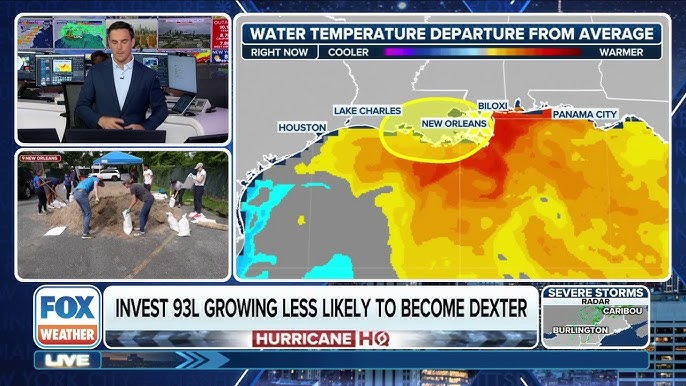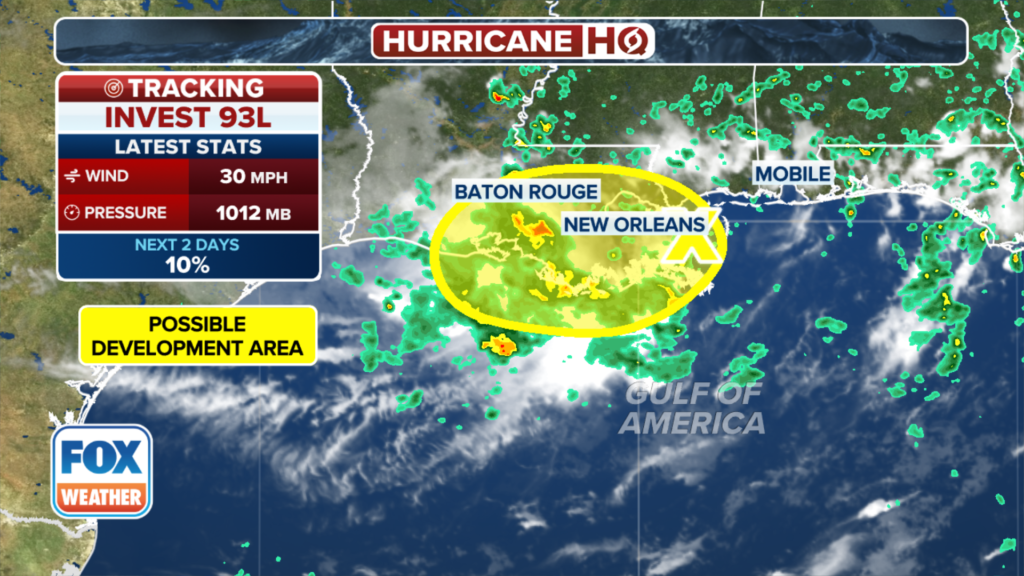Disturbance fuels flooding on Gulf Coast, pushing local communities into panic as storms bring heavy rainfall and dangerous conditions. In the past 48 hours, coastal regions in Louisiana, Mississippi, Alabama, and parts of Texas have witnessed severe water logging, property damage, and emergency evacuations due to a low-pressure system hovering near the Gulf of Mexico.
The disturbance fuels flooding on Gulf Coast with higher-than-normal rainfall, unexpected wind shifts, and intense thunderstorm cells. While hurricane season was already a concern, this early weather disturbance surprised meteorologists with its sudden power and speed.
Record-Breaking Rainfall Paralyzes Cities
Several cities across the Gulf Coast reported over 10 inches of rainfall in less than 24 hours. New Orleans saw rapid street flooding with drainage systems failing to keep up. Emergency responders rushed to rescue dozens trapped in submerged cars or flooded homes. Residents were advised to stay indoors unless absolutely necessary.
In Biloxi, Mississippi, rainfall exceeded previous monthly averages within two days. This kind of record-breaking storm behaviour has become more frequent in recent years. As the disturbance fuels flooding on Gulf Coast cities, water levels continue to rise dangerously.

Power Outages Affect Over 150,000 Residents
With strong winds and downed trees, over 150,000 households across Gulf Coast states lost power. Utility companies reported damaged power lines and broken poles due to flash flooding and falling debris. In coastal parts of Alabama, many neighbourhoods spent the night without electricity or internet connectivity.
Hospitals in some areas had to switch to backup generators, while authorities warned people to preserve phone battery life for emergency use. The wide-scale blackout showed how a disturbance fuels flooding on Gulf Coast and disrupts critical infrastructure in moments.
Schools and Airports Shut Down
Major airports including Louis Armstrong New Orleans International faced delays and flight cancellations due to low visibility and flooded runways. Schools in five counties suspended classes, citing safety concerns. School buses could not operate safely through deep floodwater.
Tourists were stranded in hotels while local authorities worked on emergency transportation plans. As the disturbance fuels flooding on Gulf Coast, it directly impacts travel and educational activities, leaving families scrambling for alternatives.
Rising River Levels and Overflow Threat
The Pearl River and Mississippi River reached alarming heights, triggering flood warnings. Emergency floodgates were activated, and sandbags distributed in low-lying neighborhoods. Some riverbanks began to collapse under the pressure of rising water.
The disturbance fuels flooding on Gulf Coast with overflowing rivers now threatening to spread even farther inland. Hydrologists warned that continued rainfall could turn moderate flooding into a regional disaster if not controlled soon.
Damage to Homes and Roads Estimated in Millions
Early damage estimates suggest property losses may exceed $100 million. Thousands of homes suffered basement or ground-floor flooding, while roads cracked or were washed away by water currents. In Texas, coastal towns like Galveston and Port Arthur reported major disruptions in traffic as bridges were closed.
Homeowners are now struggling to salvage furniture, electronics, and other essentials. The emotional and financial cost continues to mount as the disturbance fuels flooding on Gulf Coast with every hour of relentless rain.
Emergency Declarations and Government Response
Governors of Louisiana and Mississippi have declared states of emergency. National Guard units have been deployed for rescue and relief operations. Relief camps and shelters were opened, but many are already reaching full capacity.
Federal aid requests have been sent to Washington, and FEMA is preparing for potential long-term support if the flooding worsens. With every update, it’s clear that the disturbance fuels flooding on Gulf Coast in a way that requires coordinated national response.

Climate Change Questions Raised Again
As Gulf Coast communities recover, climate experts point toward warming oceans and unpredictable weather patterns. Rising sea surface temperatures create the perfect breeding ground for sudden atmospheric disturbances like this one.
The phrase “disturbance fuels flooding on Gulf Coast” is not just about weather—it’s a reflection of global environmental shifts. Policymakers and citizens alike are being pushed to question whether infrastructure and readiness levels are enough to withstand what might soon become a regular phenomenon.
Safety Measures and Public Warnings
The National Weather Service continues to issue flash flood warnings and advises residents to avoid driving through waterlogged roads. Citizens are urged to follow updates from local emergency departments and be prepared to evacuate if water levels increase.
Shelters have been opened at local schools and churches. People are advised to carry basic supplies such as dry clothes, food, water, power banks, and medication. Since disturbance fuels flooding on Gulf Coast unpredictably, it’s important to stay alert.
Conclusion
This week’s sudden weather event shows how quickly a disturbance fuels flooding on Gulf Coast, catching cities and citizens off guard. While weather systems come and go, the long-term lesson is clear: preparedness is no longer optional. As recovery begins and the water slowly recedes, questions about readiness, infrastructure, and environmental sustainability remain.
The Gulf Coast must brace itself for more frequent and powerful climate events in the future. In a region known for beauty and resilience, now is the time to strengthen systems, protect lives, and rebuild smarter.
Do follow Gulf Magazine on Instagram
Also Read – The Garudas to Face Saudi Arabia: 3 Big Challenges Ahead



